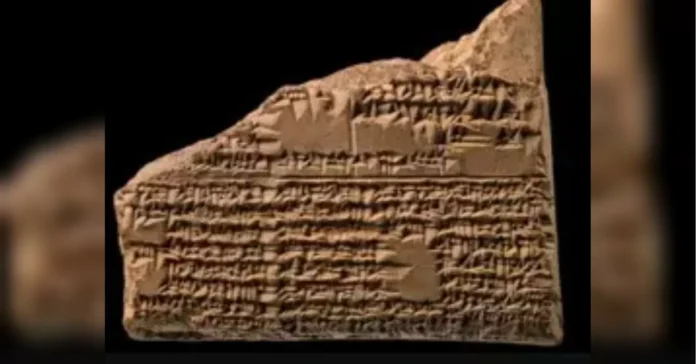The British Museum in London is renowned for its extensive collection of ancient artifacts from around the world. From Egyptian mummies to Greek sculptures, the museum holds a treasure trove of history and culture. However, among its vast collection lies a fascinating set of artifacts that offer a glimpse into the ancient world of Babylon — the famous tablets of Ancient Babylon.
The tablets, also known as cuneiform tablets, were discovered in the city of Babylon in present-day Iraq. These clay tablets date back to over 4000 years, making them one of the earliest known forms of writing. The tablets were used to record a variety of information such as laws, contracts, and administrative documents. They were also used for preserving literature, including the famous Epic of Gilgamesh.
During the 19th century, many of these tablets were excavated by archaeologists and brought to Europe. One of the largest collections of Babylonian tablets was acquired by the British Museum. Today, the museum holds over 130,000 cuneiform tablets, making it one of the largest collections in the world.
The tablets from Ancient Babylon offer a unique insight into the lives of people from this ancient civilization. They depict scenes from daily life, including trade and commerce, religion, and politics. They also shed light on the social structure and customs of the society at that time. For instance, one tablet records the marriage contract between a man and a woman, giving us an idea of how marriages were conducted in Ancient Babylon.
The tablets also contain valuable information about the economy of Babylon. They document the trade and business transactions that took place in the city, giving us an understanding of the goods and services that were exchanged. They also provide insight into the taxation system and how it was used to fund the city’s infrastructure and projects.
One of the most intriguing aspects of the Babylonian tablets is their use of the cuneiform script. This form of writing was developed by the Sumerians and was later adopted by the Babylonians. It consists of wedge-shaped symbols that are impressed onto wet clay tablets using a stylus. The script was used to write a variety of languages, including Sumerian, Akkadian, and Babylonian.
The tablets from Ancient Babylon are not only historically significant but also play a vital role in deciphering this ancient form of writing. The British Museum has made significant contributions to the study and understanding of cuneiform through its extensive collection of tablets. In fact, the museum has been a leading center for the study of cuneiform for over 200 years.
The British Museum takes great pride in preserving and showcasing these valuable artifacts for the public to see. The tablets are displayed in the Mesopotamia section of the museum, providing visitors with a rare opportunity to see these ancient relics up close. The museum also offers virtual tours and educational programs, allowing people from all over the world to experience the tablets and learn about their significance.
Apart from their historical value, the tablets from Ancient Babylon also hold cultural and religious significance. They provide evidence of the rich and diverse culture of the city and its people. The tablets also contain stories and myths from the ancient Babylonian religion, giving us an insight into their beliefs and practices.
In conclusion, the tablets from Ancient Babylon are a significant part of the British Museum’s collection and a crucial source of information about this ancient civilization. Their preservation and display in the museum not only offer an educational experience, but also serve as a reminder of the rich history and culture of Babylon. So, the next time you visit the British Museum, make sure to pay a visit to the Mesopotamia section and marvel at these fascinating tablets from Ancient Babylon.

